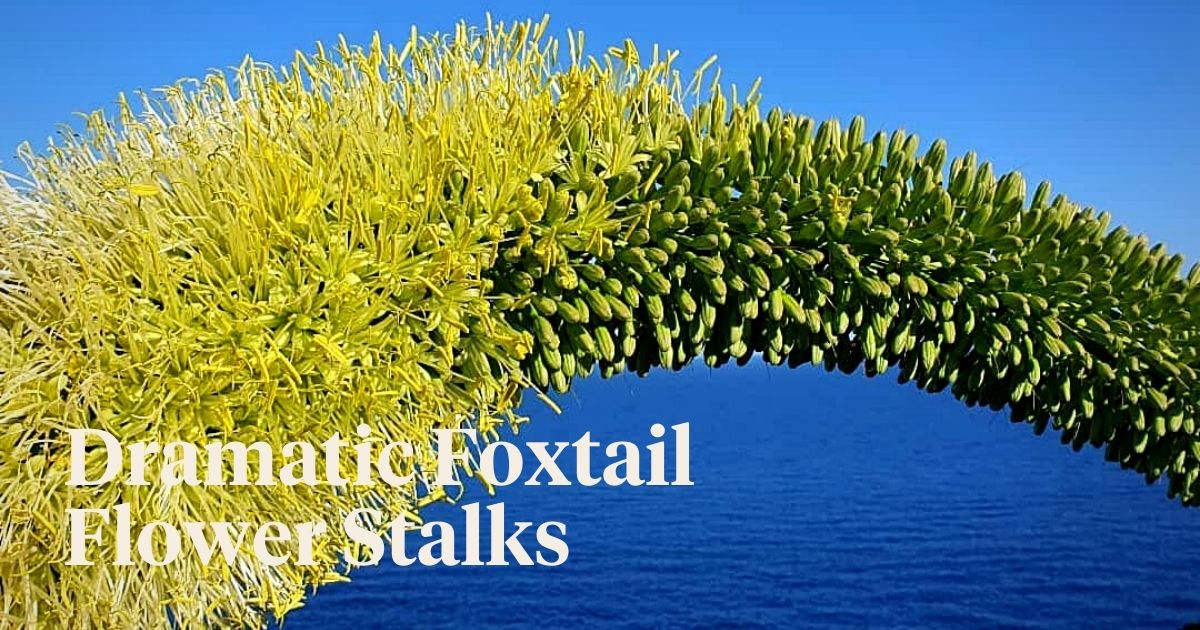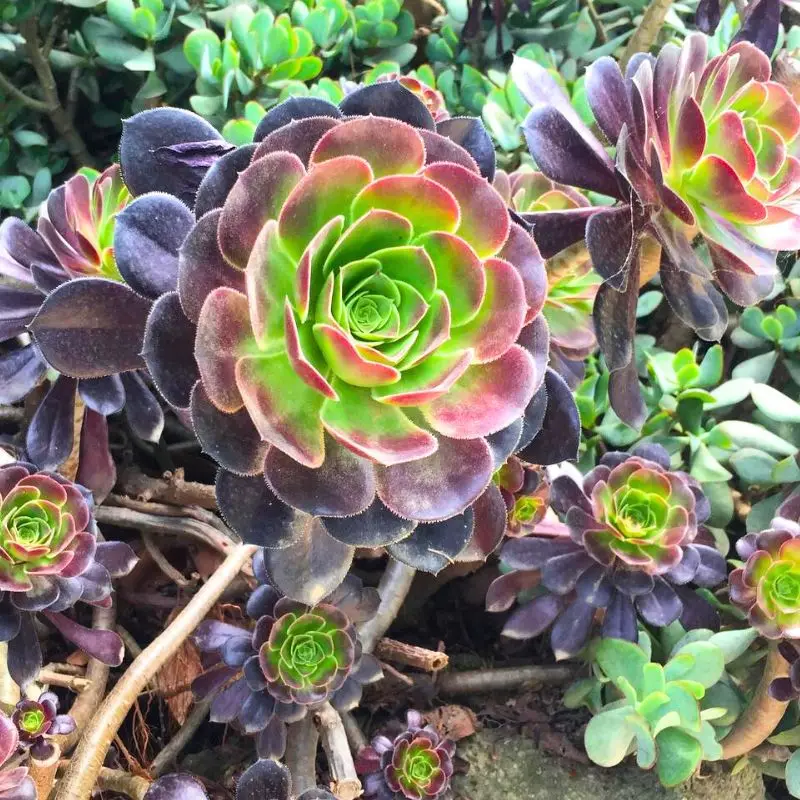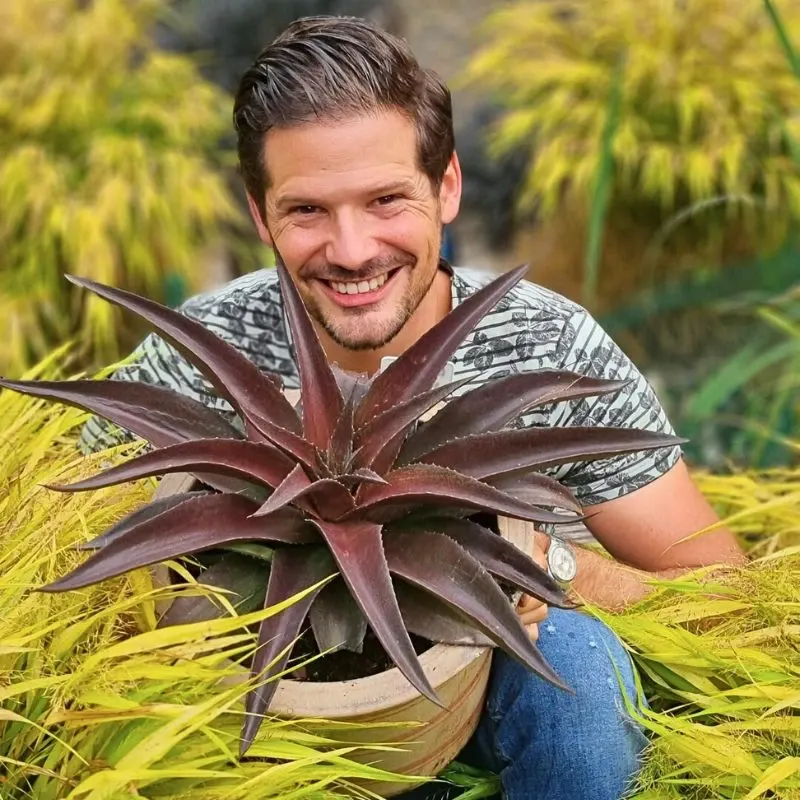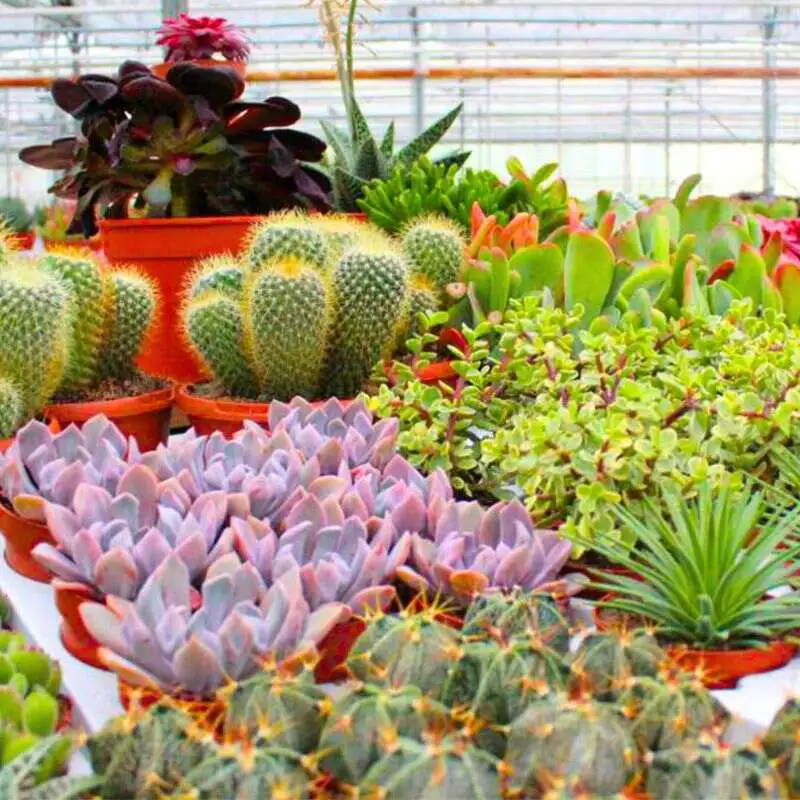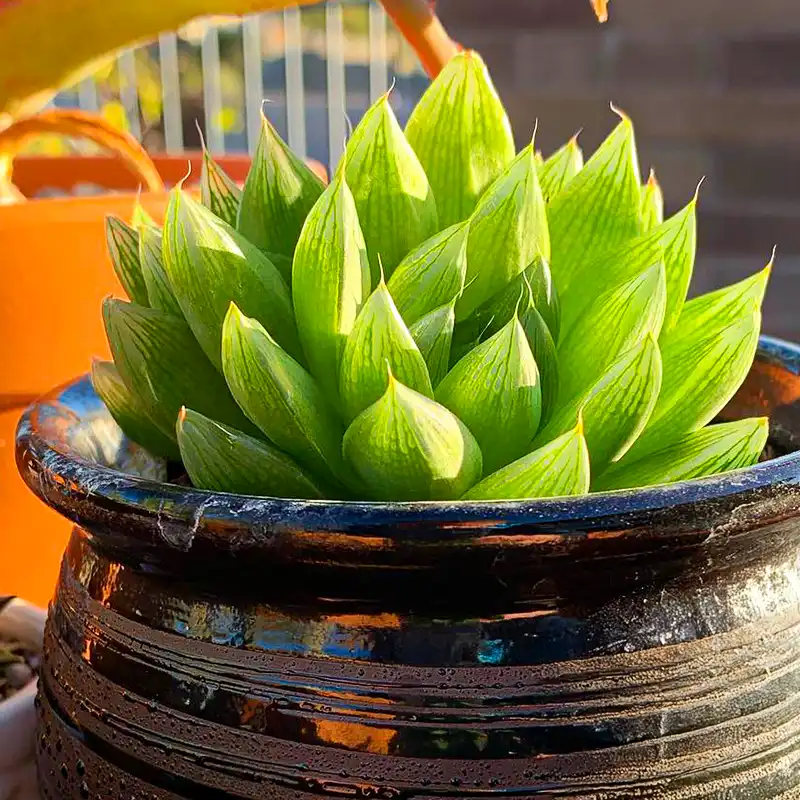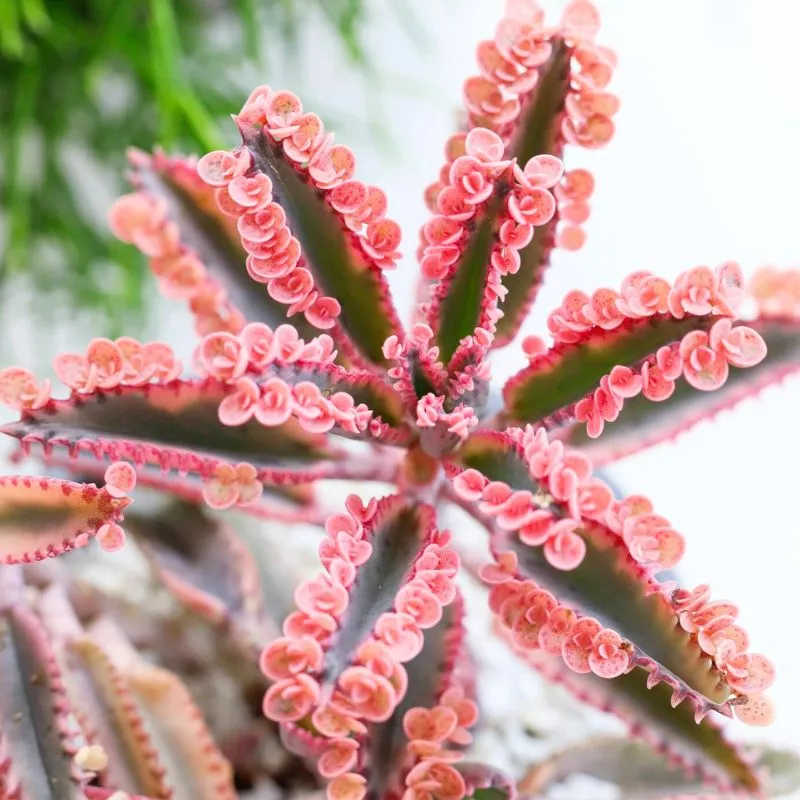Agave Attenuata flower is a species of flowering plant in the family Asparagaceae. The plant is commonly known as 'Foxtail', a name that makes reference to its development of a curved inflorescence, which is unusual among agaves.
The agave is native to central Mexico in the state of Jalisco where it produces long, curved flower stalks with greenish-yellow flower color. But this particular one grows in Spain, near Calpe. And with its unique appearance and interesting characteristics, this is a plant that deserves attention.
Agave Attenuata’s Origin and Nickname, Appearance, and Growth
Foxtail Agave gets its name from the dramatic flower stalks produced by mature plants. Single Foxtail Agave plants will grow 1-1.5 meters in size and produce many small plants around the base to form large clumping colonies.
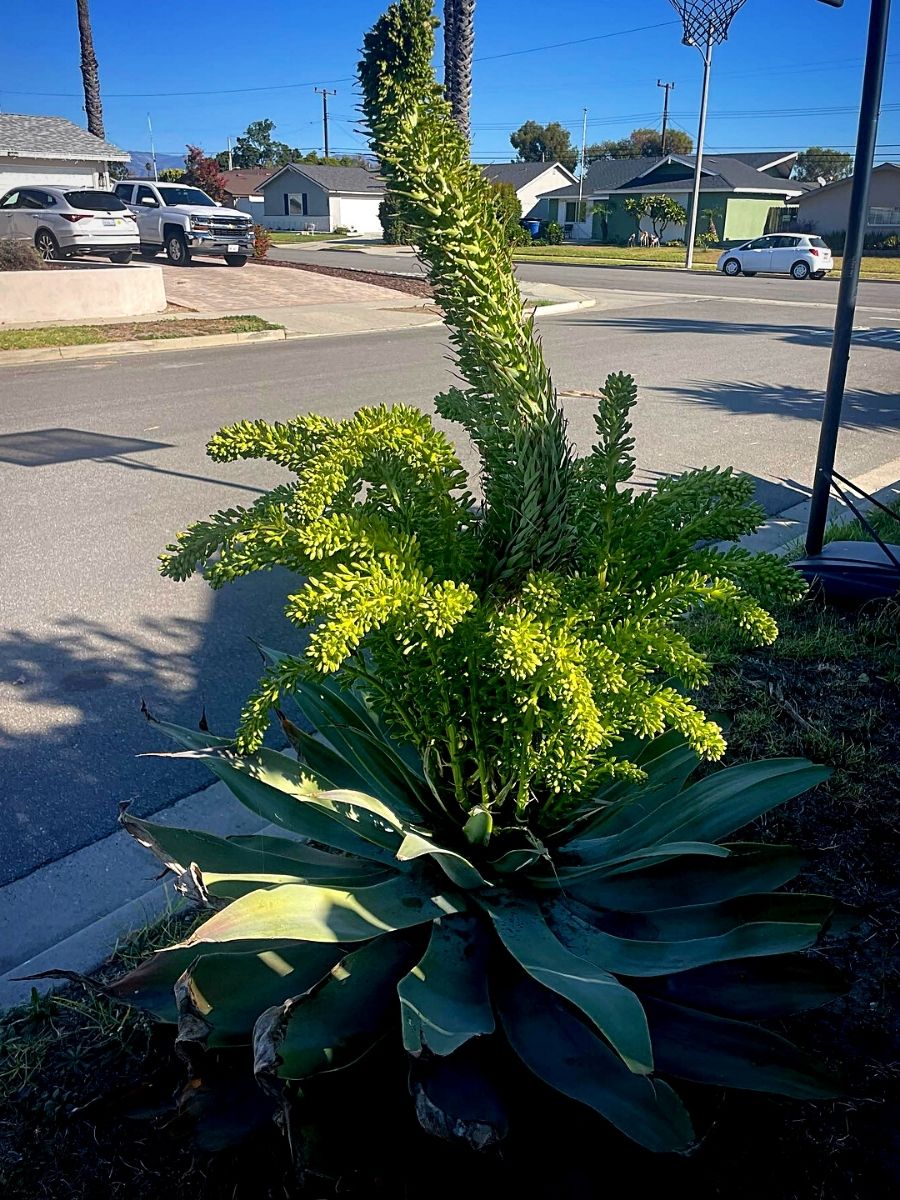
Photo by @wild_about_cactus
The arching flower stalk curves back towards the ground and sometimes features a second arch, resembling a foxtail. The Foxtail Agave produces many 'suckers' or offshoots. These offshoots increase the clumping of the foliage, resulting in thicker growth.
When the inflorescence blooms, the flower stalk features small, greenish-yellow petals. These flowers eventually fall and are replaced by seed pods, making Agave attenuata propagation easy.
While the agave is native to central Mexico, it can now be found in various regions around the world, including the Mediterranean and the Canary Islands, where it is known by several common names such as Foxtail Agave, Lion's Tail, Swan's Neck Agave, and Dragon-Tree Agave. These names are attributed to its unique agave flower spike, which resembles the bushy tail of a fox or a lion.
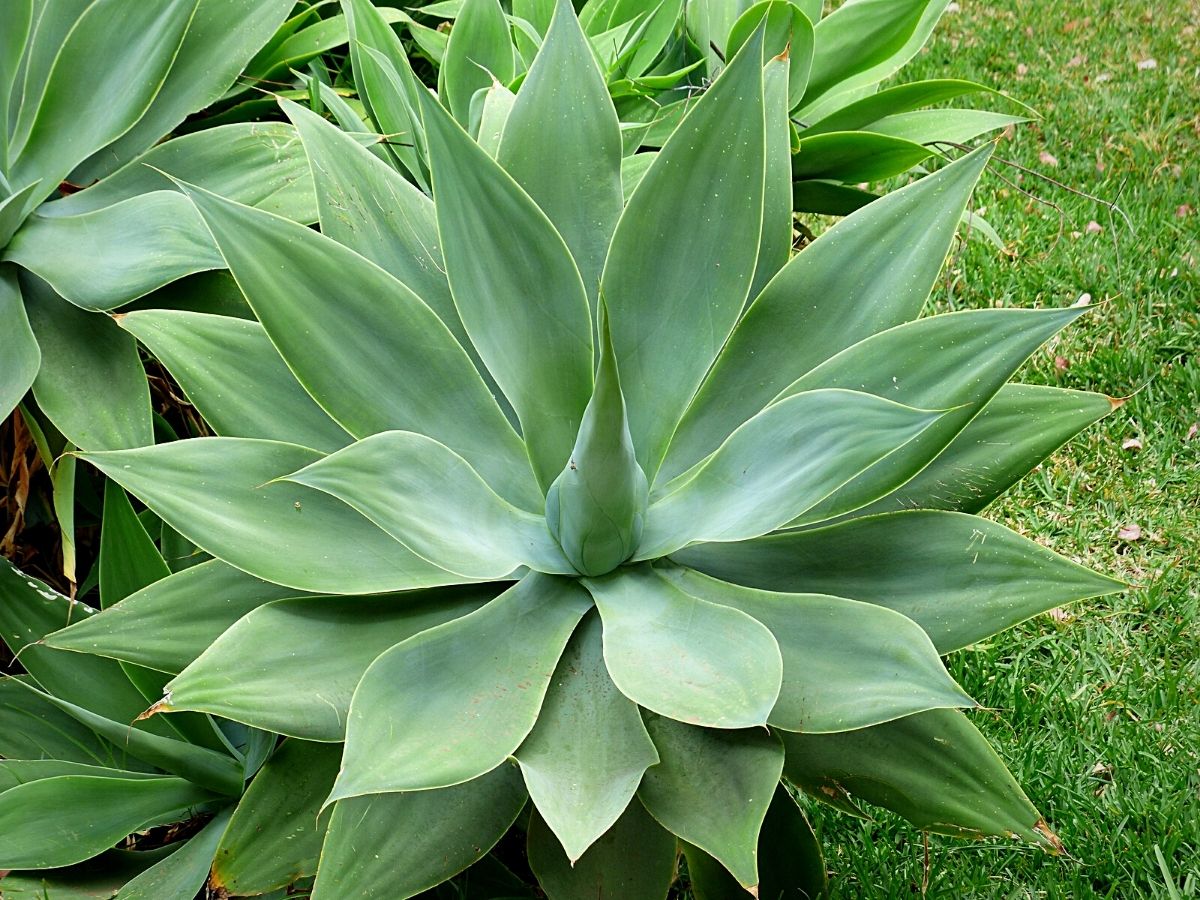
Photo by Hans
One of the distinguishing features of the Agave attenuata or foxtail agave is its rosette of smooth, soft, spineless green leaves. The leaves are thick and fleshy, giving the plant a succulent-like appearance. Its rosette can grow to an impressive size, reaching up to four or five feet in height and 6 feet in width. The leaves are arranged in an arching pattern, creating an elegant and visually appealing spectacle. Thousands of small yellow and cream-colored flowers mature on these long arching flower stalks. Flowering occurs among plants in late fall, winter, and spring, and provides a dramatic floral display for a month or two.
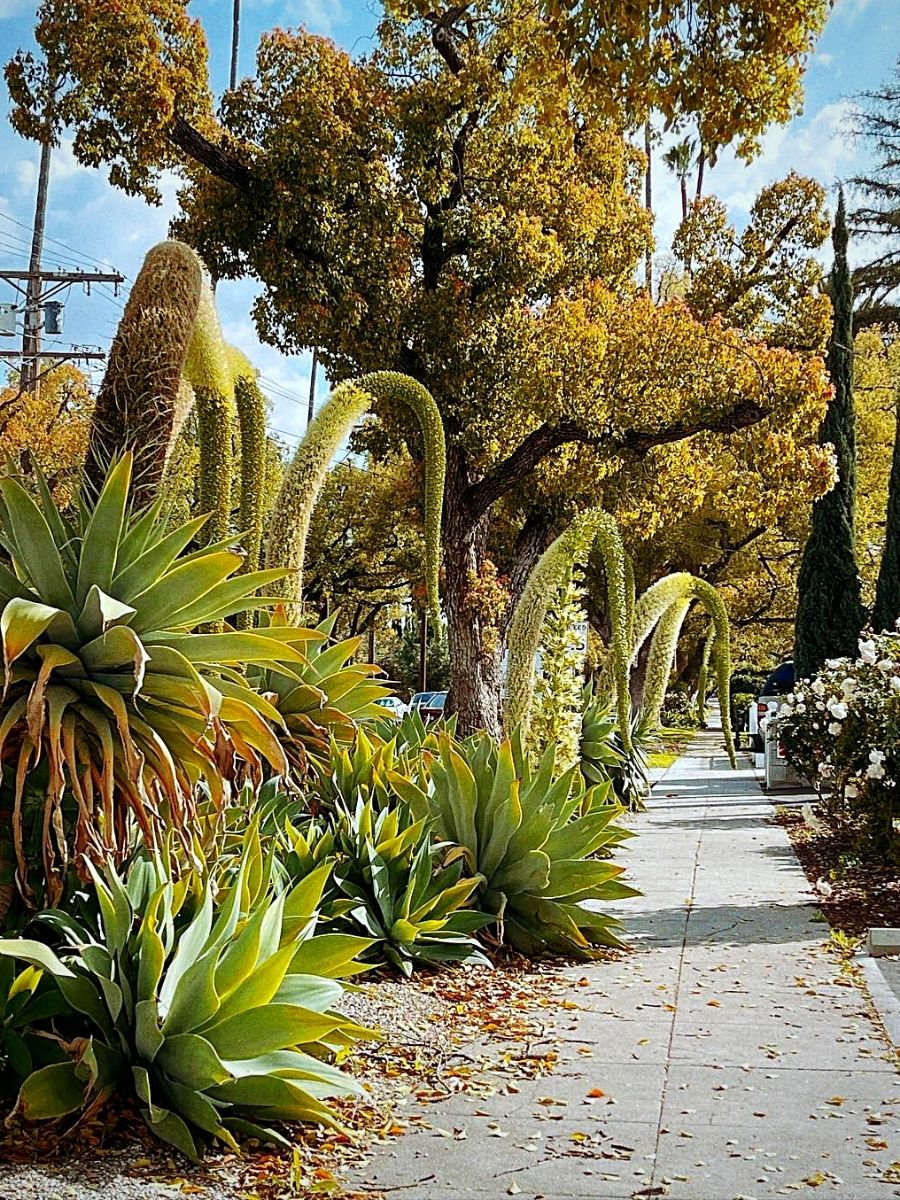
Photo by @htfphotography
How to Grow and Take Care of the Foxtail Agave
The Agave attenuata or Foxtail agave, is relatively easy to grow and care for, making it a popular choice among both novice and experienced gardeners. It thrives in well-drained soil and prefers partial shade to full sun exposure. Unlike many other Agave species, it is more tolerant of shade, making it suitable for a variety of garden settings.
When it comes to watering, the Agave attenuata prefers regular watering during dry periods but requires the soil to dry out between waterings to prevent root rot. It is also important to protect the plant from frost, as it is less cold-hardy compared to other agave species. In colder regions, it is advisable to grow the plant in containers and provide frost protection during the winter months.
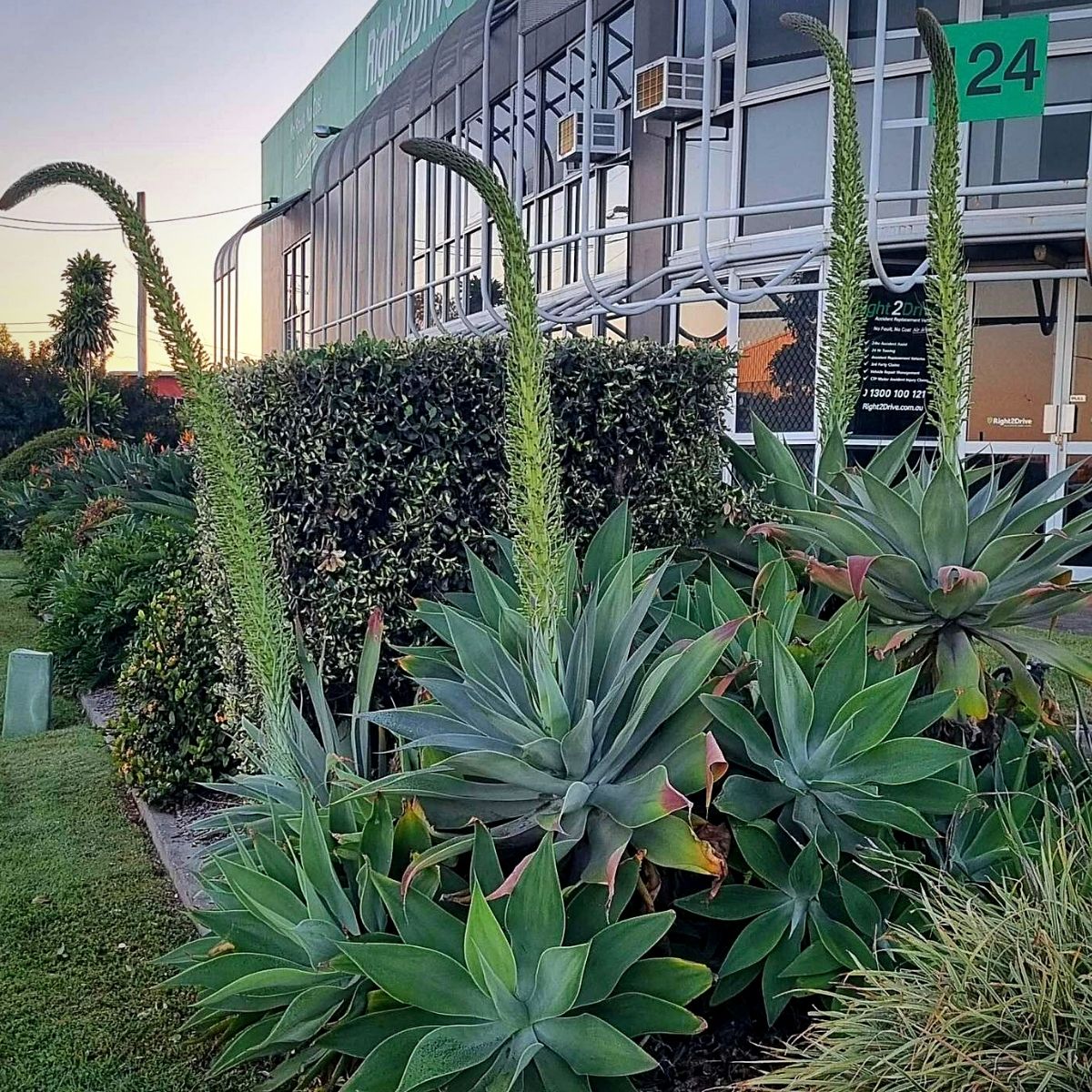
Photo by @ahigardens
Essentially, the plant needs shelter from harsh winter cold and grows best with low to very low amounts of supplemental water throughout summer. From a landscape perspective, the Foxtail Agave plant is a highly versatile accent and a special interest one. It grows well in containers, on banks, and as a solitary specimen or grouped for mass effect.
It can, also, be combined with the Mediterranean and Southwestern plant palettes. Several attractive gray-blue foliage cultivars are available from different nurseries.
Foxtail Agave’s Flowering and Reproduction
Agave attenuata is a monocarpic plant, meaning it flowers only once in its lifetime. When it reaches maturity, typically after 10 to 15 years, it produces a tall flower spike that can reach up to 8 feet in height. The flower spike is covered in greenish-yellow flowers, which give the plant its foxtail-like appearance.
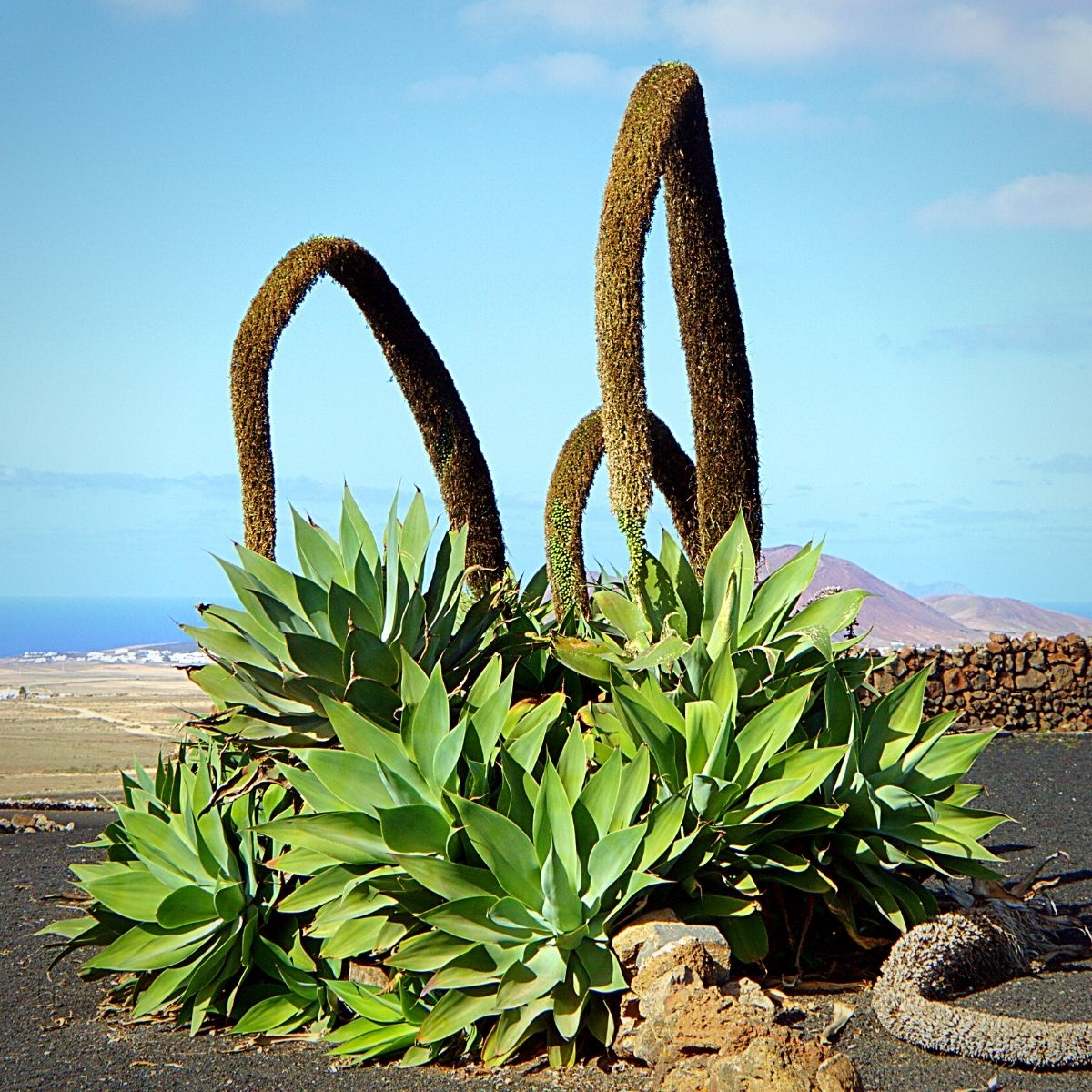
Photo by H.Zell on Wikimedia Commons
This flowering process is a remarkable sight to behold and attracts pollinators such as bees and birds. After flowering, the plant will produce seeds for reproduction, and then it will eventually die. However, before it reaches the end of its lifecycle, the Agave attenuata often produces offsets or ‘pups’ that can be propagated to create new plants.
Do Foxtail Agaves Die After Flowering?
As earlier stated, yes, after the Agave attenuata flower, the plant with its beautiful flower Agave attenuata flower will slowly die back, as it puts all of its energy into producing the flower stalk. But that’s before produces pups or offsets, which are small plants that grow from the base of the parent plant.
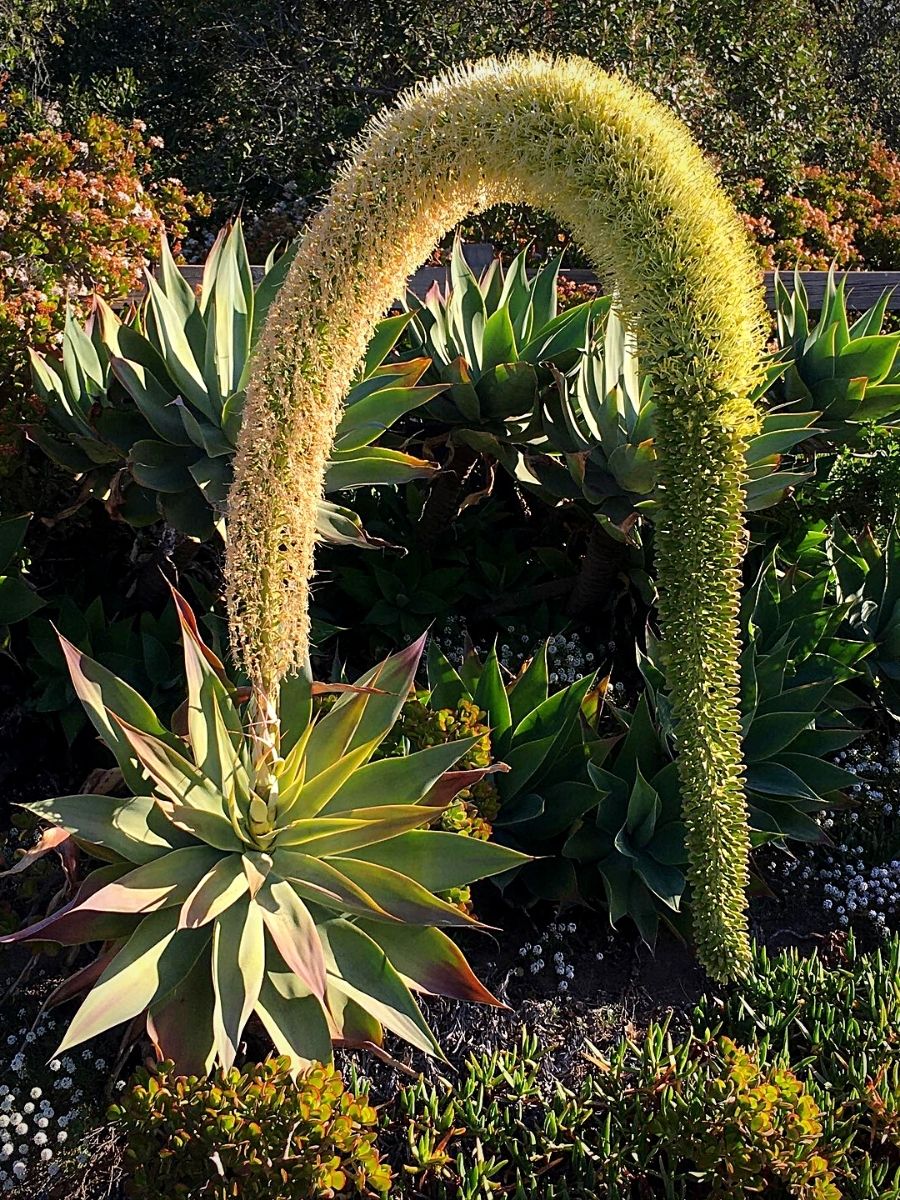
Photo by @succulentzoo
Nature is amazing, right? These pups can be removed and planted separately to grow into new plants. And also, Agave attenuata typically blooms once in its lifetime, which can take several years, depending on the conditions in which it's grown.
How Much Water and Fertilizer Does the Agave Attenuata Need?
The Foxtail Agave has low water needs. It is drought-tolerant and only requires occasional watering to keep the ground from completely drying out. Luckily, it’s hard to overwater the Foxtail Agave plant.
During the summer growing season apply a balanced liquid fertilizer to the Agave Attenuata. In general, the plant requires little additional fertilizing. During the summer, thoroughly water the plant about once per week.
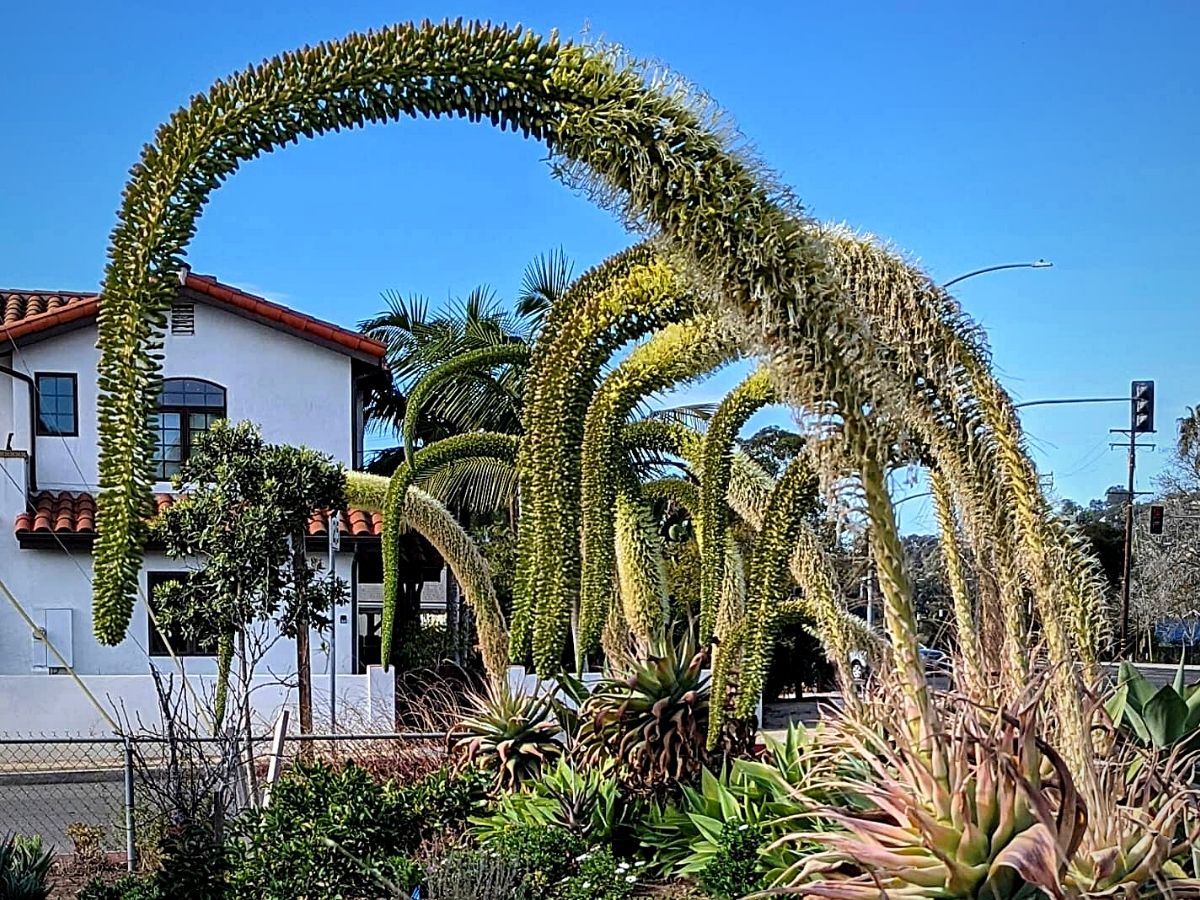
Photo by @agaves.of.california
As the temperature cools, you should need to water it less frequently. In fact, during the winter, you hardly need to water the plant at all. And when watering, you don’t need to do so on the leaves. For potted plants water the soil thoroughly and allow the water to drain completely. Do not allow the plant to sit in water.
Foxtail Agave’s Soil and Transplanting Needs
Taking care of an Agave attenuata means that it should be grown in sandy well-drained soil mixed with lots of gravel. The soil should offer good drainage and remain dry most of the time. However, the Agave attenuata can be planted in almost any soil that offers good drainage. The sandy soil just makes it easier to ensure that the soil drains well.
Note: It’s also important to avoid planting it in an area that gets a lot of strong breezes or cold temperatures.
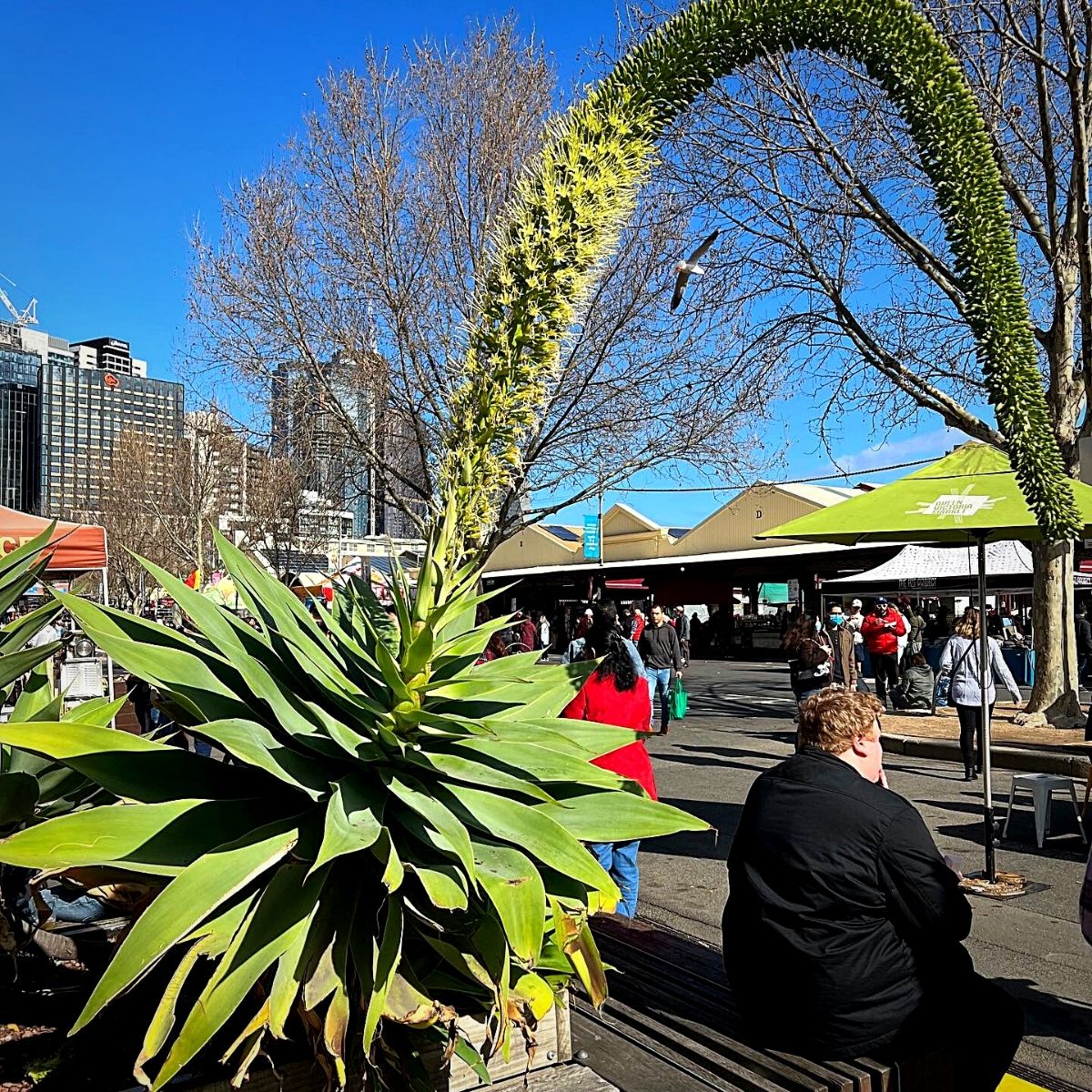
Photo by @dsdmicocina
When planting multiple plants in the landscape, keep them about eight feet apart. This offers enough space for the plants to reach their maximum spread of eight feet. You should also use caution when transplanting. The Foxtail agave doesn’t hold up well to sudden changes in lighting. Transplanting plants from partial shade to full sun may burn the leaves.
When placing it in a container or pot, the plant does not need a deep pot. The root structure doesn’t go very deep. While the plant still grows in deep soil, it’s simply a waste of soil. The soil should also be replaced every two years when the plant is planted in a container or pot.
Also, you can remove the offsets when transplanting or repotting, especially if they’re crowding the mother plant.
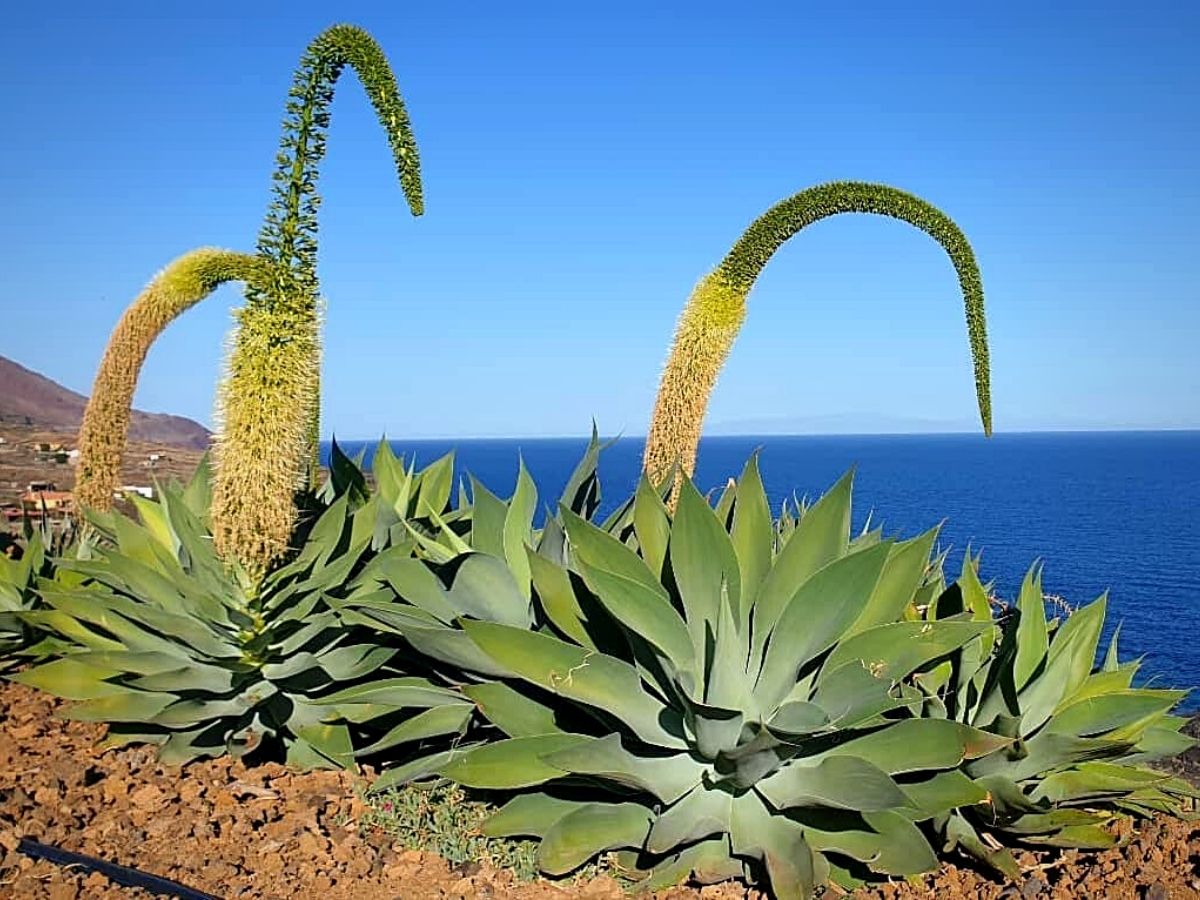
Photo by @bulletproff101
Its Pest and Disease Challenges
One of the notable characteristics of the Agave attenuata is its resistance to many pests and diseases. Its thick leaves and lack of spines make it less susceptible to damage from common garden pests.
However, like any plant, it can still be affected by issues such as mealybugs or scale insects. Regular inspection and prompt treatment can help keep these infestations under control.
How to Propagate The Foxtail Agave
It's possible to collect the plant’s seed pods. Remove the pods in the spring or summer and let them dry for several days. The agave seeds germinate when fresh and should be placed in good potting soil.
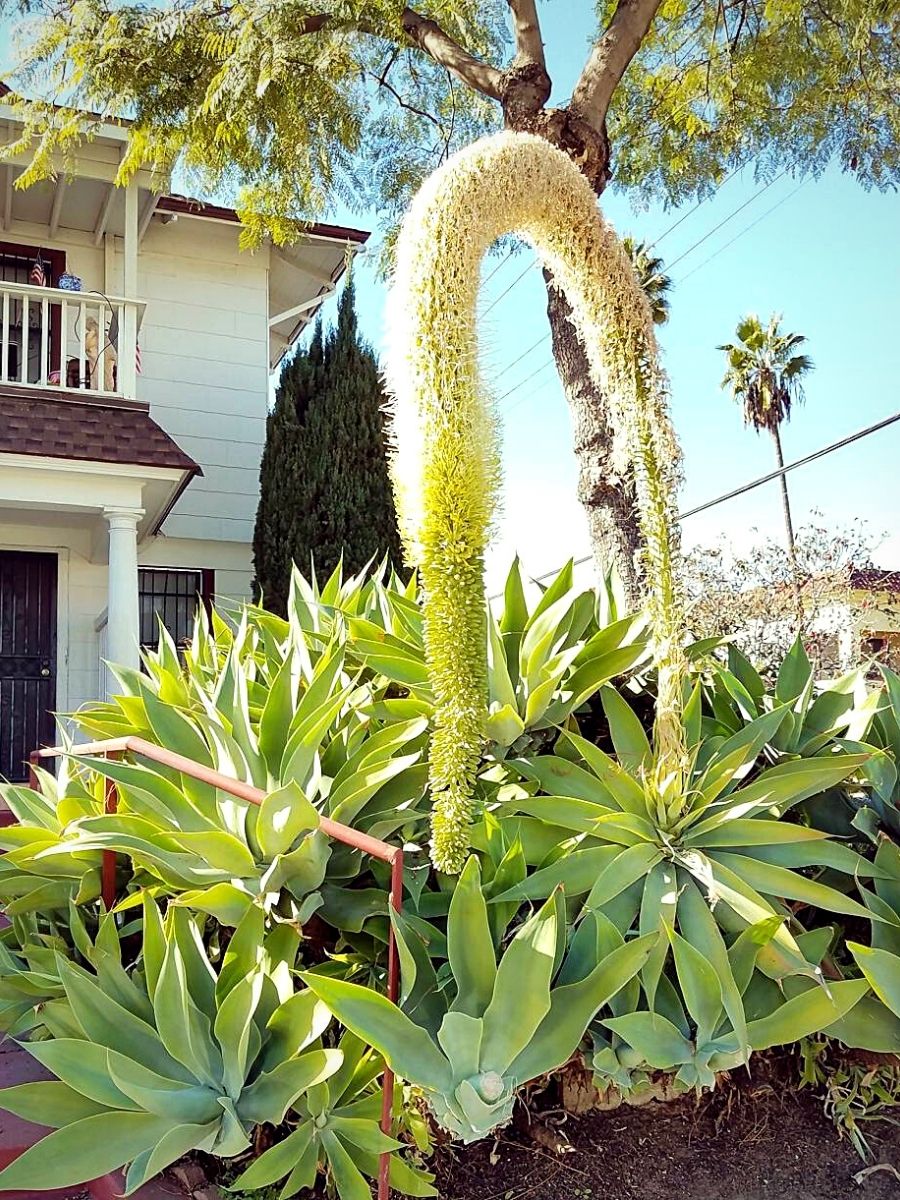
Photo by @losangeles_flora
Agave Attenuata or Foxtail Agave can also be propagated through offsets, which are small plants that grow from the base of the parent plant. Here are the steps to propagate the Agave Attenuata:
- Wait until the offsets are at least 6 inches tall and have their own set of leaves
- Using a sharp, clean knife, cut the offset from the parent plant as close to the base as possible
- Allow the cut end of the offset to dry for a few days to prevent rotting
- Prepare a well-draining potting mix using a combination of cactus mix and perlite
- Plant the offset in the potting mix, burying the base of the plant about 1 inch deep
- Water the plant thoroughly and place it in a bright, sunny location
- Allow the soil to dry out slightly before watering again, as this Agave plant prefers well-drained soil and can be prone to rot if overwatered
- The new plant should begin to establish itself within a few weeks and will eventually grow into a mature Agave Attenuata over several years
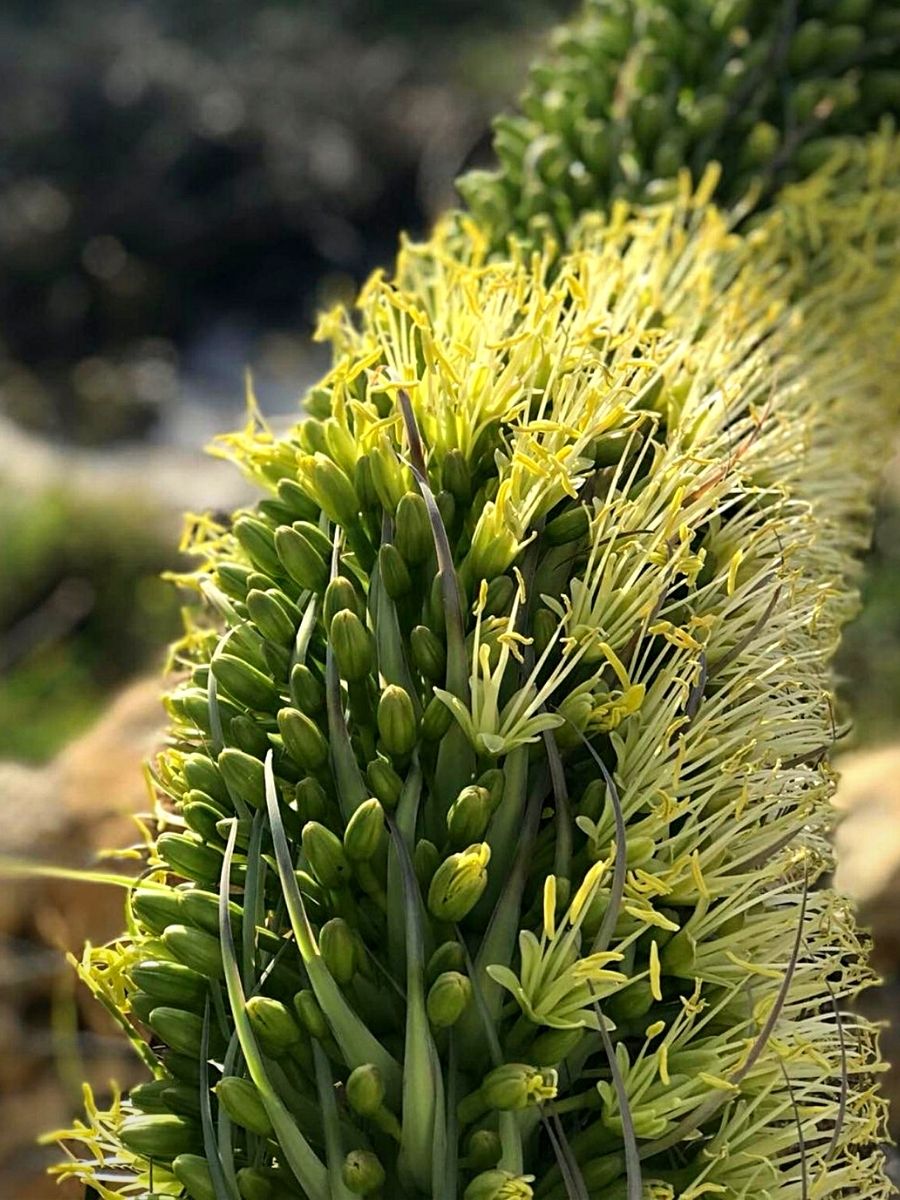
It's, also, important to note that Agave attenuata is a slow-growing plant, so, during this stage, be patient and avoid overwatering or over-fertilizing, as this can harm the plant.
Foxtail Agave’s Uses and Landscaping
The Agave attenuata is a versatile plant that can be used in various landscaping settings. Its striking appearance and unique flower spike make it an excellent choice as a focal point in gardens, rock gardens, or succulent gardens. It is, therefore, valued in many landscapes, especially, for its pale-bluish to yellow-green leaves that are soft, fleshy, and without spines on the margins or tips. Most plants grow for many years before flowering and can develop 50-100 centimeters-tall trunks.
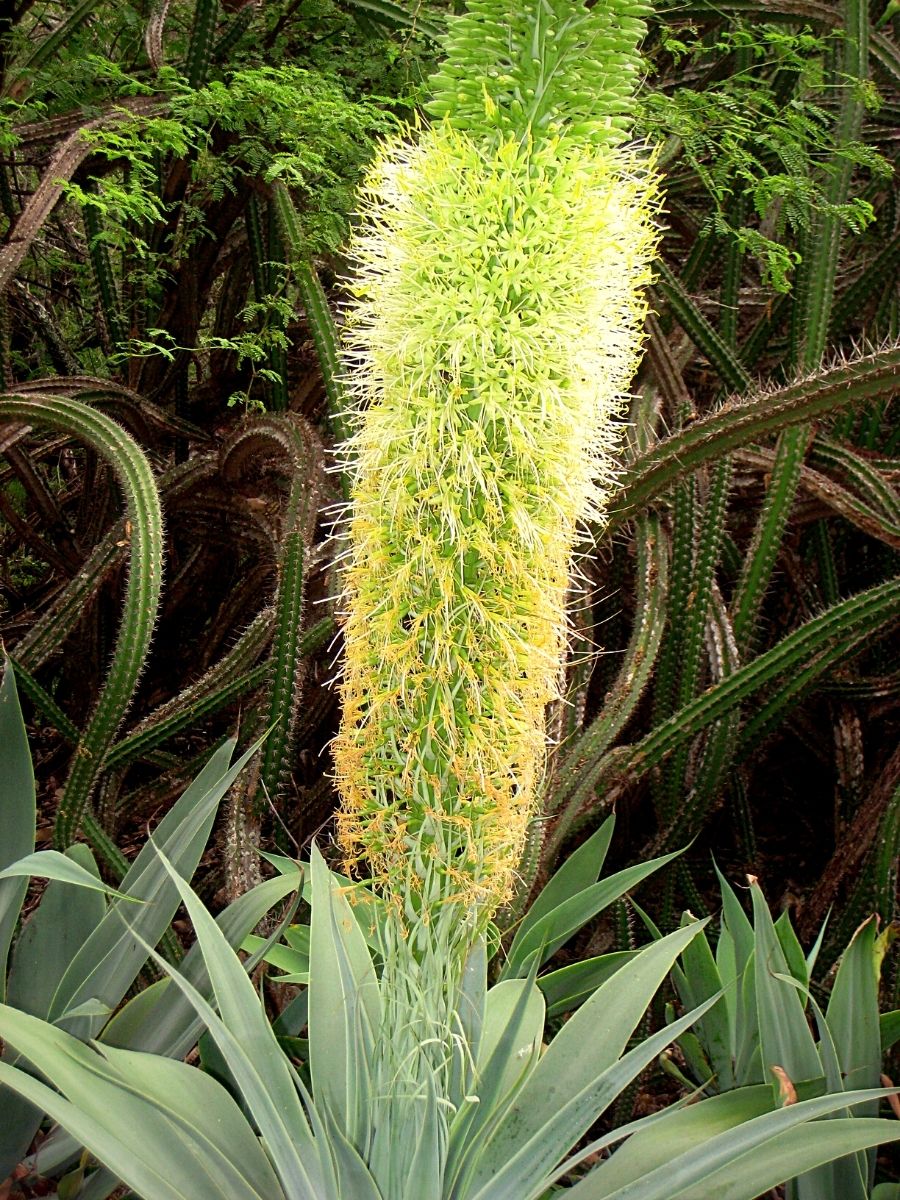
Photo by Daderot on Wikimedia Commons.
The plant can also be grown in containers, adding a touch of elegance to patios, balconies, or indoor spaces. Additionally, the Agave attenuata is often used in xeriscaping due to its drought tolerance and low water requirements.
It, certainly, is quite a unique plant, you’d say!
Feature image by H.Zell on Wikimedia Commons, and header image by @bulletproof101.

